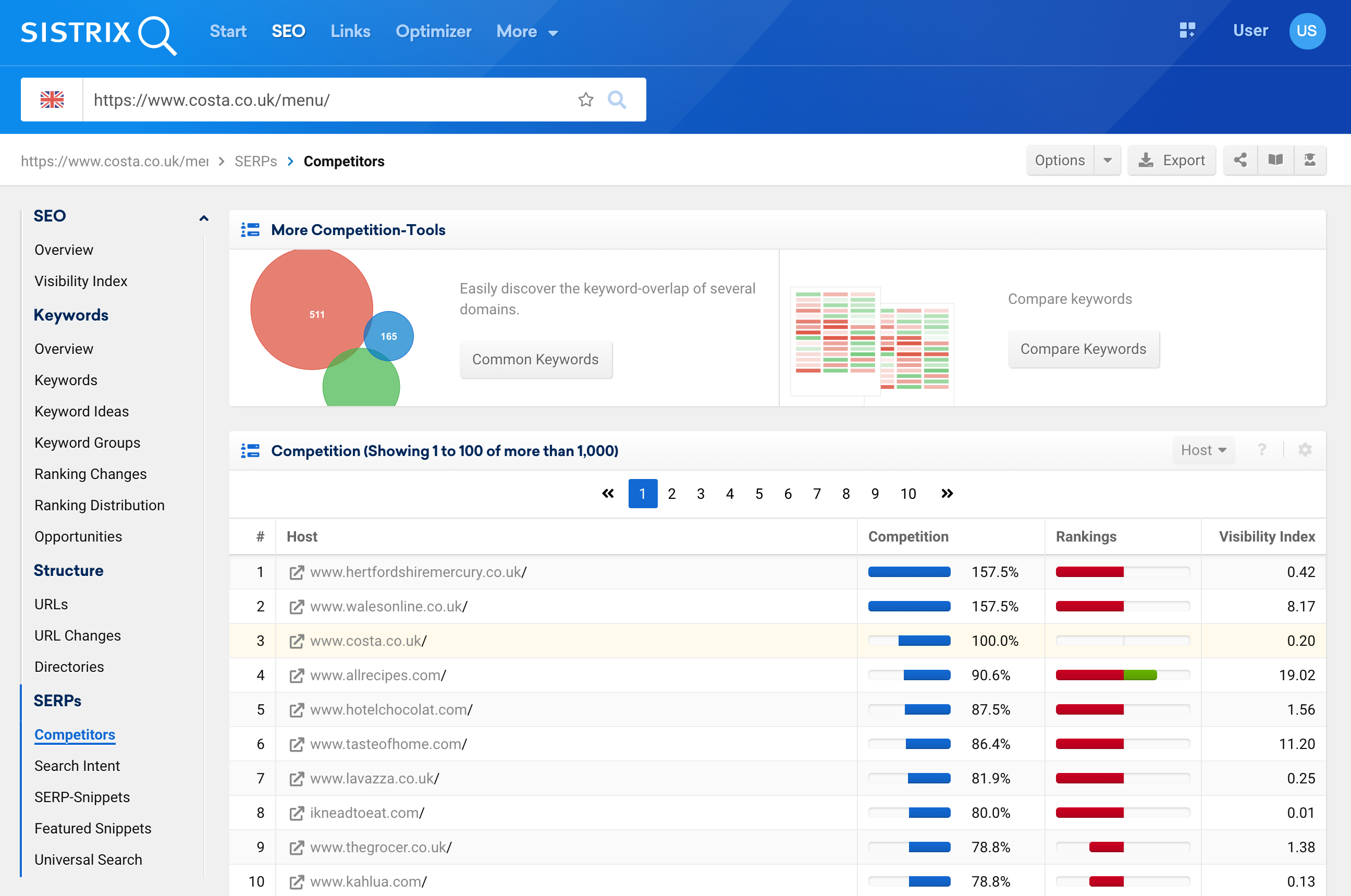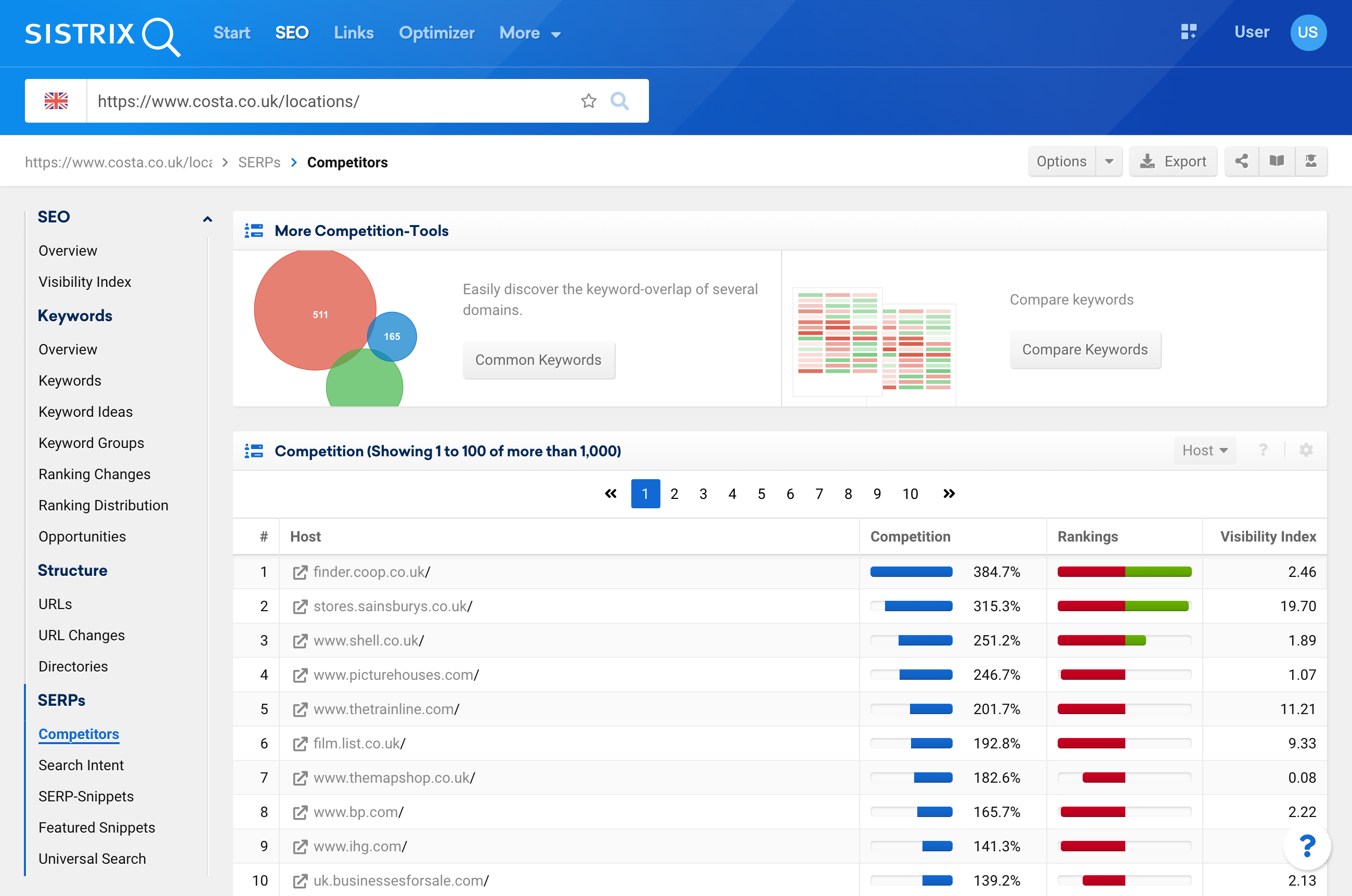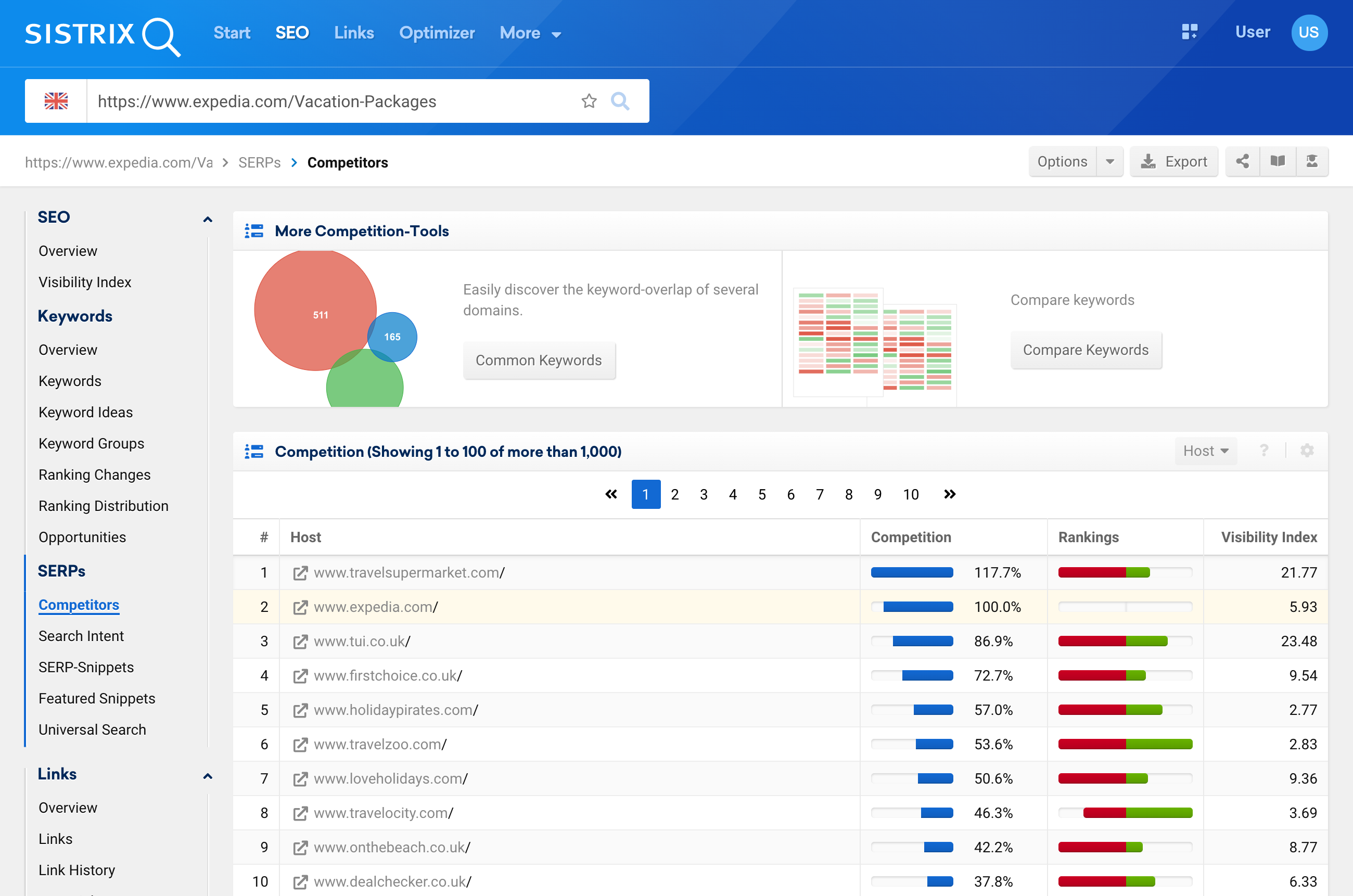If you’re responsible for developing an SEO strategy, you’ll first need to intensively analyse your competitors. There are many reasons why you should do this but it’s not always easy. In this article we’ll give you concrete information, step-by-step.
- Why are competitors so important in relation to SEO?
- Reason 1 - The resources are limited
- Reason 2: Inspiration
- Who are my competitors?
- Example: Audi
- Example 2: Costa
- What can we learn from these examples?
- Checklist - This is how you find your competitors
- The SEO Strategy Guide
- SEO Strategy Made Easy
- Competitor Analysis Made Easy
- Keyword Research Made Easy
- Determine Search Intent and Plan Website Structure
- Optimise Search Results and Generate More Clicks
- Create and Optimise Content
- Internal Linking
- International SEO
- Link Building Strategy
- Use Google Search Console + Google Verticals
Why are competitors so important in relation to SEO?
It’s generally well-know that Google doesn’t just throw the dice when it creates search results and this is where the term “Google Algorithms” come into play. In reality there’s more than one algorithm and they work together to create results based on clearly defined ranking-factors. These ranking factors can change their importance over time but one rule always stays the same – a website must earn it’s place in the Top 10 best search results.
To put it another way, if there are eleven companies competing for the Top 10, one of them isn’t going to make it. To that end, the most important aspect of competitor analysis is the question – Do I have a chance to get into the Top 10.
Reason 1 – The resources are limited
A clear rule exists in the world of SEO – Resources are limited. Effectively, it means that there’s only ten results on the first page of search results.
To be factually correct that’s not always the case as the old ‘ten blue links’ are now a mix of various types of search result and when they are all counted, there’s often a lot more than 10 elements in which you can click the first search result.

For the sake of simplicity, however, we can assume that there are only ten organic search results, and that everything that takes place on the second search results page will rarely make a significant contribution to the success of a website.
Given this information then, it should be clear that a company that seeks rankings for a search term like “online fashion” in the UK has to make a great effort to overtake competitors like asos.com, missguided.co.uk or boohoo.com. In this case, the result of an honest analysis would probably be to focus on other goals by, for example, ignoring SEO as a channel in this case.
This doesn’t mean that a company has zero chance against the competition. It’s still possible to find small gaps that the competition doesn’t cover. Or, there’s a possibility to invest, not insignificant sums, in different areas such as brand, link and reputation building. These alternatives could, however, require financial resources that a company might not have.
Reason 2: Inspiration
The second reason lies undoubtedly in the possibility that you’ll be inspired by market peers. That’s the reason you have a tool like SISTRIX. Through this tool you’ll have the possibility to learn and to analyse their methods.
Fou’ll find the following possibilities useful:
- Which search terms do my competitors cover that perhaps I don’t have coverage for yet?
- What site architecture and elements does a competitor use to achiever their rankings. Do they use a blog, a forum or an how-to section, for example.
- What off-page methods have built my competitors links?
Who are my competitors?
When you as a company who its competitors are you’ll often get a long list, or an answer like “we don’t have any competitors.” Both answers are usually wrong.
The reason: Companies often think too strongly about their offline markets. An example:
Bloomly flowers in Oxford has three shops and has been in the business for years. Gardenly, not far away, is has four shops and the two proprietors have known each other for years, work in the same circles and know each other as competitors. The problem is, the online competitors are different.
With respect to SEO, the only relevant competitors and the ones that compete for relevant (often the first position) rankings for the same search terms. Even the company that doesn’t have any competitors will see at least nine other search results on the first search results page, even if they’re not regarded as true competitors. They are there and they’re not going away.
Example: Audi
The differences can be observed well at Audi.co.uk. Naturally, you would expect Audio to list other national and international car brands as competitors. When you take a look at the online competitors through the SISTRIX Competitors features, very few of those brands can be found, and none in the Top 20.
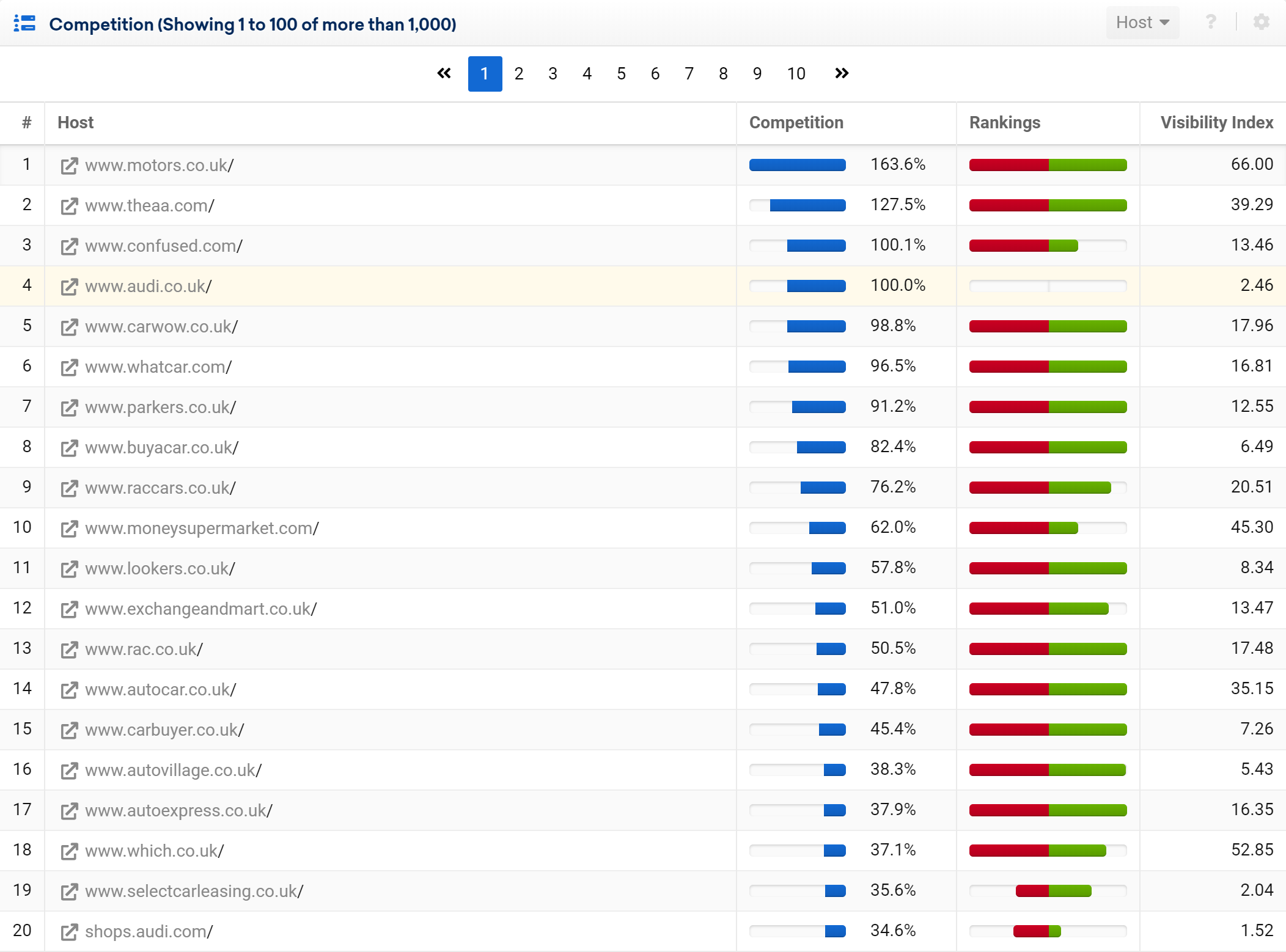
Instead of brands we’re seeing sales platforms (new and used) along with specialist magazines and forums – not exactly what Audi would see as competitors in the offline world.
To better understand this, here’s how the list is created. For this report we look at the Top 100 rankings for the target domain (in this case audi.co.uk) and find other domains which also rank for these keywords. The ordering, ‘Competition’ is based on the visibility that the domain has for the ranking domains. The value can be over 100% if there competitor has a better visibility for the common ranking keywords.
Example 2: Costa
For those that don’t know, Costa coffee shops are the UK’s Starbucks, and that’s about the only major competitor they have on the high street. The competitor analysis of costa.co.uk shows and even stronger example of the underlying problem when thinking about competitors. Starbucks isn’t in the Top 20 of competitors, and only appears at position 30.
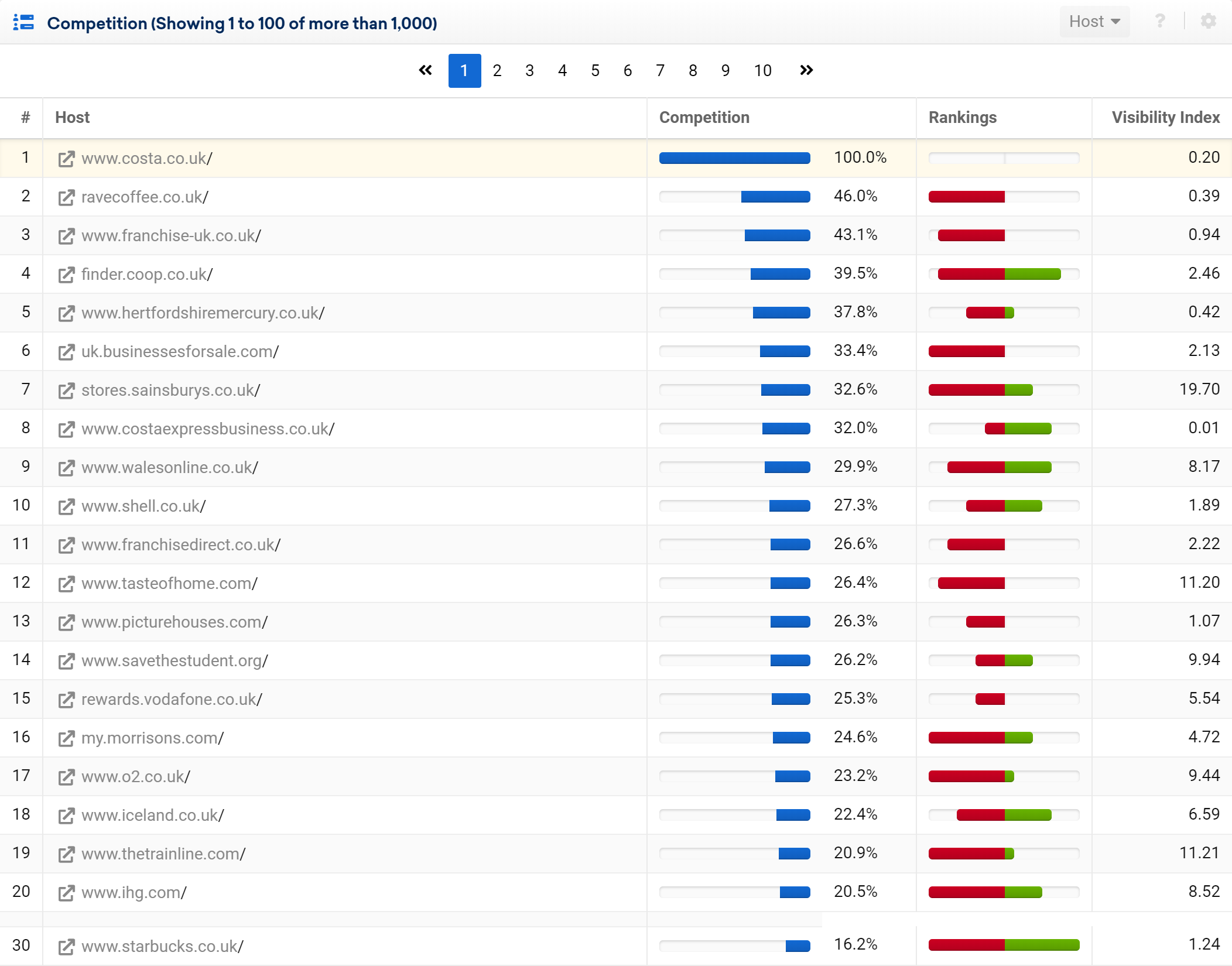
Costa has a very limited range of products in a tight sector and offers information on business opportunities and locations, so in addition to a pure-play bean seller, there is competition from newspapers, franchise business information portals and supermarkets.
What can we learn from these examples?
The Competitors function has one problem – It only works when the site analysed is ranking for relevant keywords. SISTRIX doesn’t know about the offline status of competitors, only the competitors available through rankings generated at Google so it means that when a website hasn’t generated any relevant rankings – for example start-ups, the Competitors feature is not useful.
The same is true of exceptionally innovative sectors. Sometimes there aren’t any search terms that fit which means few rankings, and no useable competitor analysis data. In these cases you don’t have to give up on finding digital competitors though. In the early days of the low-cost coach service sector there weren’t many relevant search terms. At this time though, it was possible to look at similar industries, for example Flights, to find and learn about the relevant search terms and link strategies.
Consider also the existing websites that aren’t yet full optimised. When Audi, for example, only focuses on rankings around the search term “audi” (“audi used car”, “buy audi a8”) then the Competitors list will also show other sites that have something to do with Audi. In this case we see used car sales platforms. If Audi was to move away from these generic search terms (family car, electric car) then the competitor report would look different.
And here’s another, ficticious, example. When a retail site isn’t well optimised, but has a well funktioning jobs page, then it’s going to have job-portal competitors such as Monster, Indeed and Reed.
Here’s an important tip. You don’t have to focus at the domain level. The Competition feature works at the directory or subdomain/host level. If we use the directory /menu then we see a different range of competitors as compared to the complete domain. In this case we’re seeing allrecipes.com and lavazza.co.uk.
If we use the subdirectory /location we find a new set of competitors including similar store locators.
And by the way, you can even use a single URL to generate competitors. The URL https://www.expedia.com/Vacation-Packages has a Visibility Index of 1.08, which is bigger than many websites. The results are shown below.
Checklist – This is how you find your competitors
The ground rule is this – SEO competitors are websites that rank for the same search terms as the target website, and..
- from which one can find inspiration in search terms and structure and/or…
- from which one can learn about external linking
It makes sense to work through the competitor function for your own domain and also for your relevant parts of the site structure (i.e. directories or subdomains) and to always check them with regard to the two factors. Discovering directories and subdomains that are relevant can easily be done using the “directories” and “host names” evaluations.
It would be sensible to create two types of competitor lists.
- Competitors for which inspiration can be found in the structure and search terms. Prefer websites that have a similar business model.
- Competitors for which you can learn about external linking. These can be from different business models. An example would be Audi, who could learn from the used car platform providers.
To keep the lists more usable, you could split the list into Top 5 (Primary Websites) and The Rest (Secondary websites). You could you the Visibility Index as one critera for the primary list.
Of course you could add The Guardian and Ebay into the lists as they will always compete with some of your keywords, but in practice, the overlap is so small as to be irrelevant.
Don’t forget – You shouldn’t restrict yourself to the competitors feature. Just because an offline competitor has bad rankings and doesn’t appear in the list, it doesn’t mean that you can’t learn something from their backlinks.
It’s also a good recommendation to update the lists occasionally with the aim of checking through them once per year and bringing them up to date. Check for new start-ups that can lead you to fresh ideas. Also look for competitors that have gone.
To help you that that, there’s another tool within the SISTRIX Toolbox. With the Alerts system (https://app.sistrix.com/account/alerts) there’s a New Competitor function. To enable an alert, simply add the domain and the country.
The SEO Strategy Guide
Take the next step in this training program. This set of learning documents will help improve your SEO results and the way you use SISTRIX.
Competitor Analysis Made Easy
Which websites are competing for valuable rankings for my relevant keywords?
This guide was created in cooperation with Markus Hövener from Bloofusion. Your feedback is welcome.

